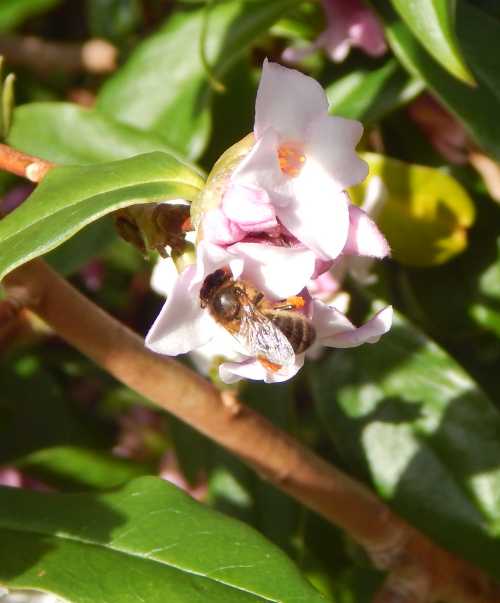Plants For Nectar Flow
Nectar flow describes the period when flowering plants are producing and making nectar available to bees and pollinators. This is a key consideration when devising a gardening calendar to ensure abundant foraging opportunities are available for bees throughout the year, and beekeepers in particular are concerned with nectar flow.
Why Is Nectar Flow Important?
It's important for beekeepers to understand how nectar flow affects the honey bee colony, and the role of nectar flow on colony health and fitness.
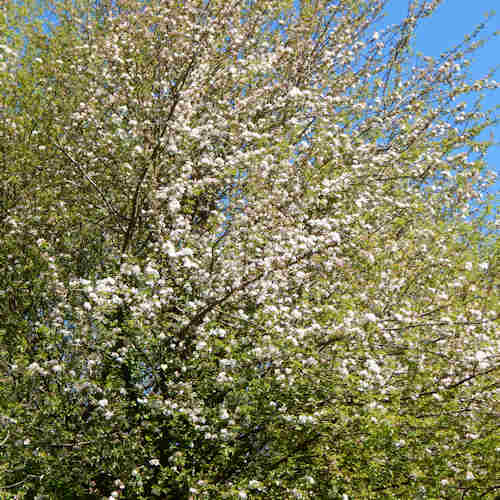 Apple blossom in spring
Apple blossom in springFirstly, as the flowers begin to bloom in spring, the bees begin to gather pollen to support the development of larvae in the hive. Pollen is typically gathered from spring flowering trees and shrubs, such as fruit trees, willow catkins, and early blooms, like crocus.
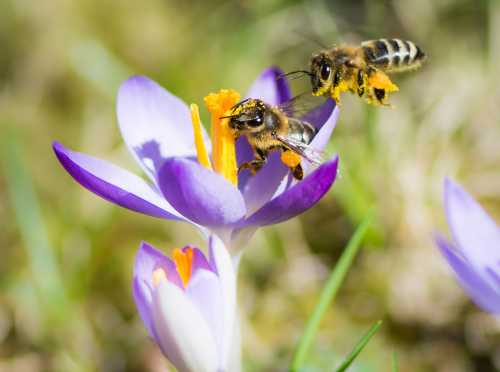
A good flow of nectar is vital for the developing colony.
Nectar provides energy for the growing colony as workers go about their tasks of foraging and beeswax comb-building, and research suggests that comb-building periods coincide with periods of high nectar intake, as the need for comb storage increases.
Regional nectar flow
Knowing about the nectar flow in your region is important. You should allow for local weather patterns as well as availability of nectar through the year from the local flora. Your region may experience dearth or flow, and advance knowledge of local patterns will help you ensure sufficient honey is left for the bees to feed.
Knowledge of local nectar flow can also help guide you with regard to the plants you need to include in your own garden to supplement local provision of nectar in the surrounding landscape.
3 Tips for prolonging nectar flow
Aside from devising a calendar to ensure good nectar flow, you can also try these tips to prolong the season of various plants and shurbs:
1. Dead heading
This simple technique to encourage re-growth of flowers is frequently overlooked, yet it is a highly effective method for prolonging the flowering season of many flowers and shrubs.
2. Cutting back
Some plants with flowers along erect stems (such as Linaria purpurea) can have the stems cut when only a few individual flowers still remain at the very top of the stem. The plant will then throw up new stems and flowers.
3. Sow quick flowering annuals
Include annuals in your garden to help provide extra forage opportunities for bees. The list is endless, but could include Marigolds, Zinnia, Nasturtiums, California Poppy, Sunflower and many more.
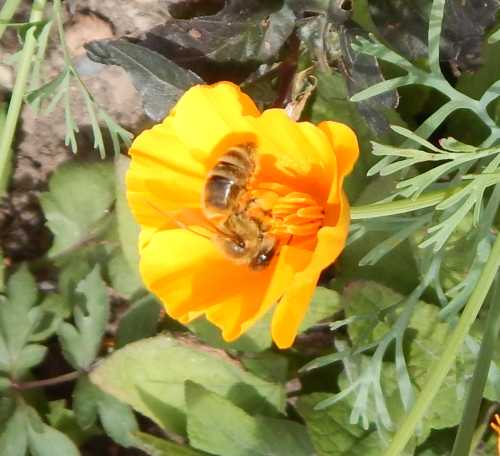 California poppy - an easy to grow, lovely annual flower to include in the garden.
California poppy - an easy to grow, lovely annual flower to include in the garden.Plants for nectar flow
Remember to check for regional variances and flowering times in your region:
Trees and shrubs:
Alder (Alnus spp.)
Willow (Salix spp.)
Blackthorne, sloes (Prunus spinosa)
Cherry, plum (Prunus spp.)
Apple (Malus spp.)
Pear (Pyrus spp.)
Horse chestnut (Aesculus hippocasstanum)
Daphne (Daphne Bholua)
Sweet box (Sarcococca spp.)
Others: wild brambles, raspberries, blackberry, heathers).
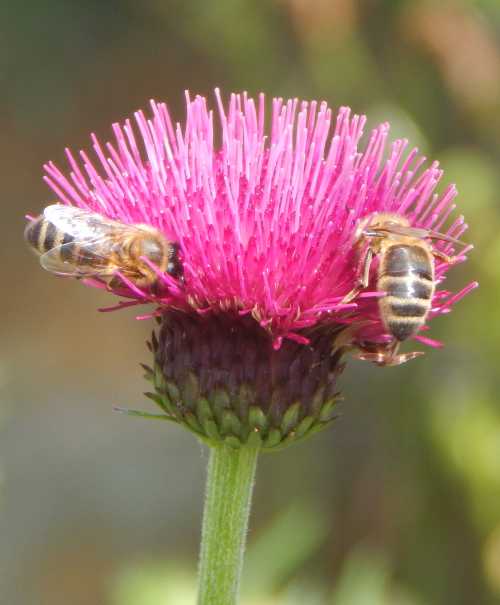 Honey bees on plume thistle
Honey bees on plume thistleFlowers:
Aster
Bee balm (Monarda)
Coneflower (Echinacea)
Catmint (Nepeta)
Plume thistle (Cirsium spp.)
Ice plant (Sedum)
Rudbeckia
Sneezeweed (Helenium).
For more plants, see the links below:
More articles about bees and plants
- Bees And Brambles: The Value Of Brambles To Bees Also known as blackberry bush, research shows each bramble flower secretes lots of nectar for bees!
- Bees And Bee Balm Bee Balm (Monarda) - also known as 'Bergamot) is a herbaceous perennial which is attractive for bees.
- 30 Fantastic Garden Flowers For Bees Flowering plant recommendations for the perfect bee garden.
- Bees love lupins – but so do slugs and snails, so what can you do? Here's a way to protect your lupins....using garlic!
- Plant Oregano For Bees (Marjoram) It's rich in nectar, and attracts bees, butterflies and hoverflies in summer. Here's how to plant it.
- Fennel Pollen And Nectar Bees love fennel! How to grow it, gather it, and the many uses of fennel seeds and pollen.
Resources
- Bogdanov, Stefan. (2016). Beeswax: Production, Properties, Composition, Control. Bee Product Science.
- See other links on this site.
